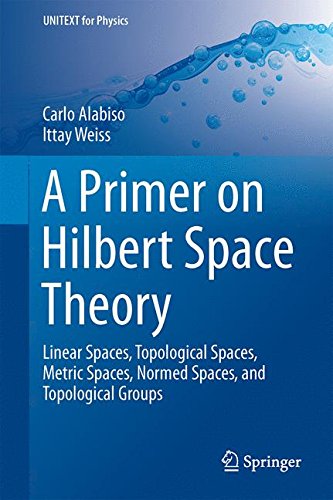

Most ebook files are in PDF format, so you can easily read them using various software such as Foxit Reader or directly on the Google Chrome browser.
Some ebook files are released by publishers in other formats such as .awz, .mobi, .epub, .fb2, etc. You may need to install specific software to read these formats on mobile/PC, such as Calibre.
Please read the tutorial at this link: https://ebookbell.com/faq
We offer FREE conversion to the popular formats you request; however, this may take some time. Therefore, right after payment, please email us, and we will try to provide the service as quickly as possible.
For some exceptional file formats or broken links (if any), please refrain from opening any disputes. Instead, email us first, and we will try to assist within a maximum of 6 hours.
EbookBell Team

4.8
94 reviewsThis book is an introduction to the theory of Hilbert space, a fundamental tool for non-relativistic quantum mechanics. Linear, topological, metric, and normed spaces are all addressed in detail, in a rigorous but reader-friendly fashion. The rationale for an introduction to the theory of Hilbert space, rather than a detailed study of Hilbert space theory itself, resides in the very high mathematical difficulty of even the simplest physical case. Within an ordinary graduate course in physics there is insufficient time to cover the theory of Hilbert spaces and operators, as well as distribution theory, with sufficient mathematical rigor. Compromises must be found between full rigor and practical use of the instruments.
The book is based on the author's lessons on functional analysis for graduate students in physics. It will equip the reader to approach Hilbert space and, subsequently, rigged Hilbert space, with a more practical attitude.
With respect to the original lectures, the mathematical flavor in all subjects has been enriched. Moreover, a brief introduction to topological groups has been added in addition to exercises and solved problems throughout the text. With these improvements, the book can be used in upper undergraduate and lower graduate courses, both in Physics and in Mathematics.